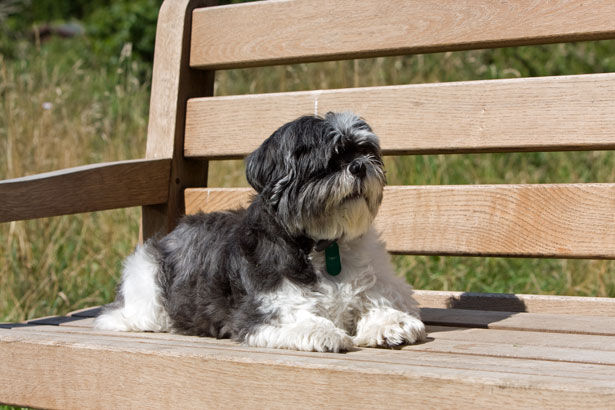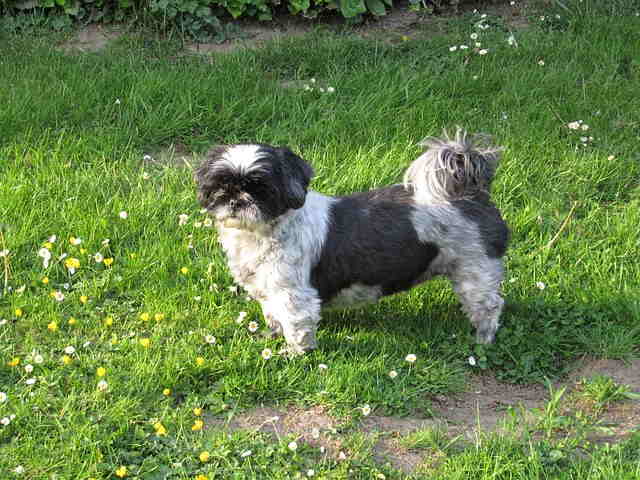Essential Steps to Success: How to Effectively Crate Train Your Older Dog
BY MOLLY | EVERYTHINGSHIHTZU.COM | Updated October 28, 2023
This post may contain affiliate links. Read privacy & disclosure policy for info
Crate training isn't exclusively for puppies; it can be a beneficial tool for older dogs too.
Whether you've just welcomed a senior dog into your home or are trying to instill some new habits in your faithful, long-time companion, crate training can help.
Utilizing crates can provide a secure space for your canine and assist in managing various behavioral issues.
However, the process of crate training an older dog is different from that of a young puppy and comes with its unique challenges.
This guide aims to introduce you to crate training an older dog, providing practical tips and methods on how to transition your beloved pet into a cozy, comfortable crate life.

Steps to Crate Training Your Older Dog
The first step in crate training an older dog is selecting a suitable crate.
Since older dogs might have arthritis or other health issues, the crate must be comfortable, easy to enter and exit, and large enough for the dog to stand, turn, and stretch out comfortably in.
Place the crate in a familiar, well-frequented area of the house so it doesn't feel isolated.
The next critical step is to foster positive associations with the crate.
Start by introducing your dog to the crate in a calm, casual manner.
Keep the door open and allow your dog to explore it independently.
You can encourage your dog by placing treats, meals, and their favorite toys inside.
However, remember that unlike puppies, older dogs may take a longer time to adapt to a new routine or environment.
Some may even resist the crate due to previous negative experiences.
Patience, therefore, is key during this process.
Never rush or force your dog into the crate. Take baby steps and ensure that every interaction your dog has with the crate is a pleasant one.
That old adage that you can’t teach an old dog new tricks, isn't necessarily true.
But if you try to force the training, or go too fast, you could cause your dog to panic and create a negative association with the crate.
Potential Challenges and How to Address Them
In any training regimen, including crate training, it's necessary to anticipate potential hurdles and create strategies to fix them.
When it comes to crate training an older dog, here are a few challenges that you may encounter, along with some solutions.
- Anxiety and Resistance
Older dogs might show resistance or anxiety toward a crate, especially if it's their first encounter with one.
Some dogs may become anxious when left alone or confined.
To tackle this challenge, ensure you create a positive and comfortable environment around the crate.
Start slowly and increase the duration of crate time gradually. Reinforce the experience with treats, praise, and toys.
If your dog seems highly anxious, it might be beneficial to consult with a professional trainer or a vet.
- Aging and Health Considerations
Older dogs may have physical health issues, like arthritis, that limit their movement and could cause pain when entering or exiting a crate.
To address this issue, consider purchasing a specially designed crate with an easy-access door.
Ensure the crate has adequate padding for comfort.
Additionally, remember to keep your expectations in line with your dog's physical capabilities.
- Addressing Past Negative Experiences with Crates
Dogs who've had unpleasant experiences with crates in the past might show an adverse reaction.
In this case, patience and positive reinforcement are vital.
Start by letting your dog explore the crate without locking them in.
Make the crate a source of good things, like feeding them their meals in it or giving them treats inside the crate.
It's also crucial to never use the crate as a form of punishment to prevent any negative associations.
Navigating these challenges will require patience, understanding, and persistence.
But, by focusing on creating a positive experience for your dog, you can ensure the crate becomes a pleasant and comforting space.
Turning The Crate into Your Dog's Favorite Retreat
Does it make sense that if something is uncomfortable that you are less likely to want to do it.
I know that is true for myself as well as for most humans, and I bet it's true for dogs too.
That's why making the crate as comfortable and inviting as possible for your dog, will make training him so much easier for you.
When your dog is comfortable in the crate, he’ll be more willing to spend time inside it.
You don't need to go all Feng Shui (but I suppose it couldn't hurt), just a few simple adjustments will make it more enjoyable.
Assuming he’s not prone to chewing, some soft bedding will make the crate a more pleasant place to be. I'd recommend splurging for a cushiony crate pad for his old bones.
Using a blanket might be too hot for a long-haired dog, so you may be better off with a nice, soft pad.
Be sure to get the right size for his crate. If the cushion is too big or too tall, it will create an even smaller space for your dog to squeeze into, which may be uncomfortable for him.
If there's a favorite toy he likes to cozy up to, leave it in his crate to comfort him.
Another trick to use in crate training is using treats.
Put a few of his favorite treats in the crate and leave the door open.
If it’s something he really loves, in time he’ll likely go in and investigate.

Making Crate Time a Daily Routine
Once your older dog is familiar with the crate and sees it as a positive space, it's very important to make it their daily routine.
A consistent schedule will help the crate become a regular part of your dog's life.
Planned crate periods at the same time every day can help your dog feel safe.
For instance, consider crating your dog when you're away from home or during the night when everyone's asleep.
However, remember to balance crate time with plenty of exercise and socialization.
Health permitting, older dogs still need stimulation and interaction.
Daily walks and playtime can help your dog expend energy, keeping them healthier and further discouraging anxiety while crated.
Common Mistakes to Avoid During Crate Training
One common mistake when crate training, especially with older dogs, is over crating.
Over crating can lead to anxiety, depression, and destructive behavior, which is not at all what we want for our beloved dogs.
Dogs, especially seniors, need space and time out of the crate to roam around and exercise.
Also, never, ever use the crate as a punishment zone.
If your dog views the crate as punishment, it will only lead to fear and anxiety around the crate.
Another thing to avoid is rushing the crate training.
Patience is key, and trying to progress too quickly can lead to setbacks.

Alternative Options to Crating An Older Dog
In most cases, crate training an older dog is achievable.
However, if for some reason your dog simply can’t tolerate being crated, there are other options.
One option is to create a dog-proof room or area in your house.
This can be a whole room or a corner of a room where your dog is free to move around without encountering risky or valuable items.
The space should be pleasant and comfortable for the dog, with a dog bed, toys, water, and perhaps even a wee-wee pad if necessary.
Dog gates or baby gates can be helpful in keeping the dog confined to this area.
Another option is to hire a dog sitter or dog walker to ensure your dog gets the care and stimulation they need while being left alone.
This approach can be particularly useful for dogs with separation anxiety.
Leash training is another alternative to crate training, allowing your dog to roam within a set radius, usually within the same room as you.
Remember, each dog has unique needs and what works best for one might not work for another.
It's always a good idea to consult with a veterinarian or professional trainer to determine what could be the best fit for your pet's age, temperament, and health.
In conclusion, the key to successful crate training is providing a positive crate experience for your dog and maintaining consistency and patience in your approach.
This process might present challenges, especially with senior dogs, but the rewards are well worth the effort.
Always remember the end goal—making the crate a safe and comforting haven that your dog looks forward to spending time in.
Remain patient, stay consistent, and you'll be well on your way to developing a transformative and comforting crate experience for your dog.



